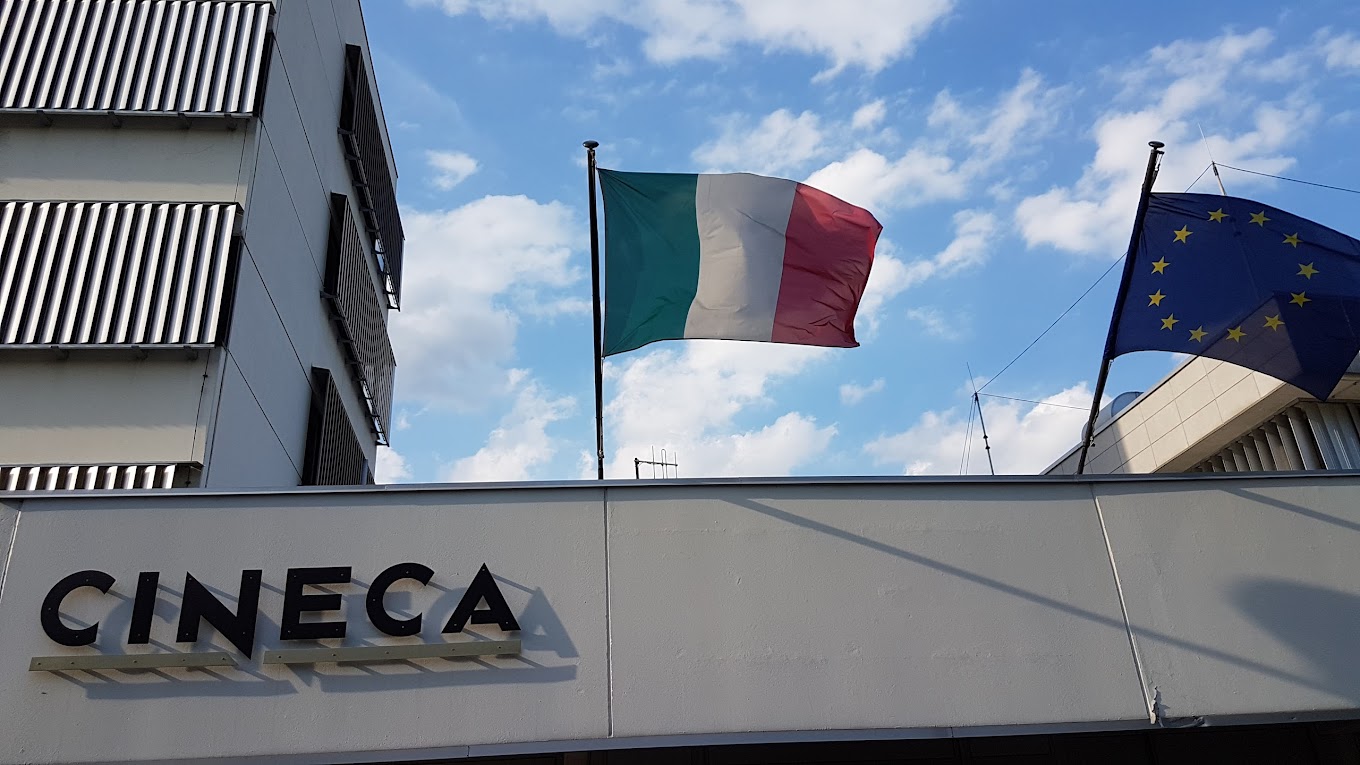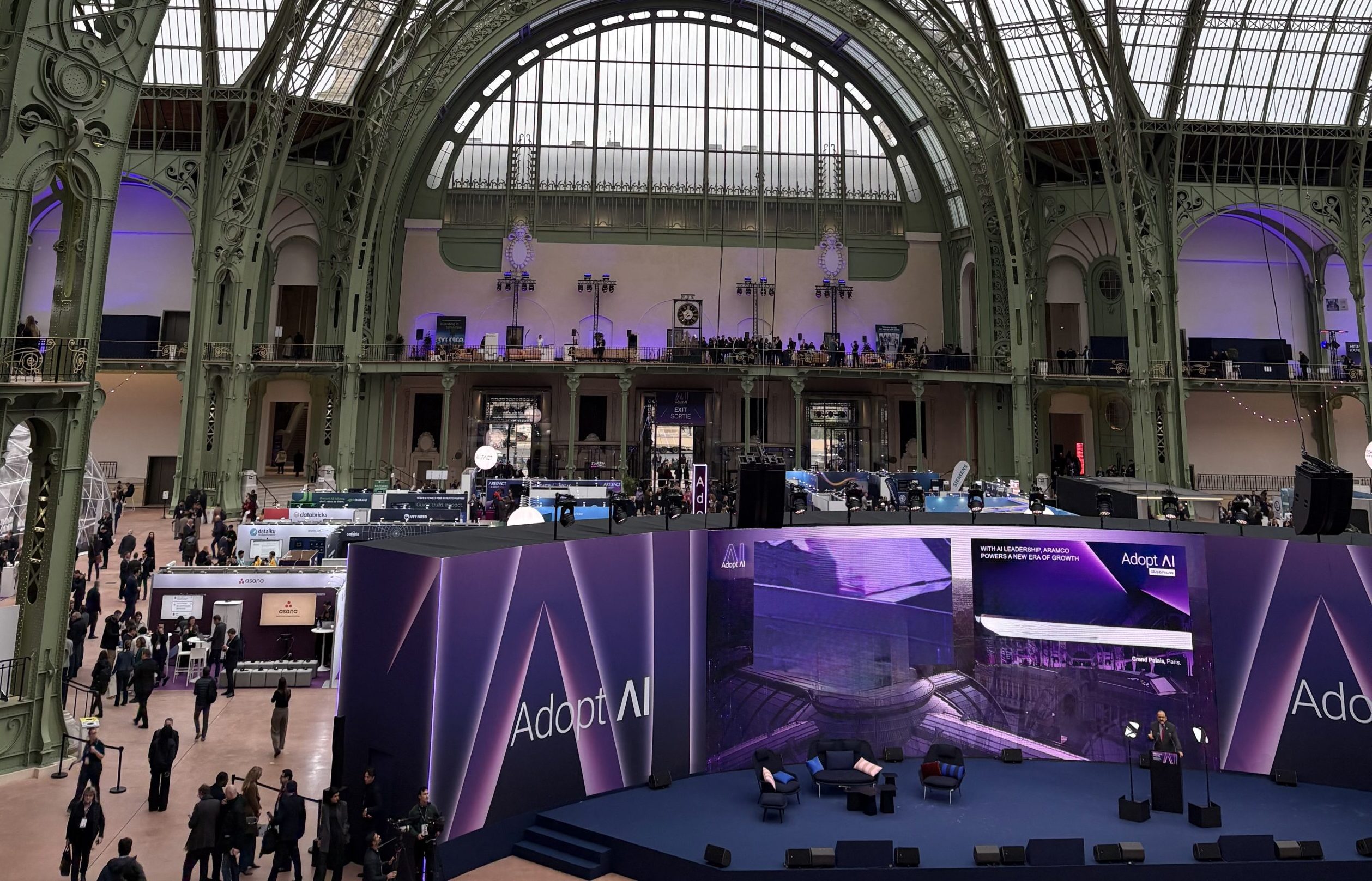
Connecting National and regional digital twins to Destination Earth
The Italian consortium Cineca is expanding its partnership with the European Centre for Medium-Range Weather Forecasts (ECMWF) to lead an extended consortium that explores the interoperable capabilities provided by the Digital Twin Engine to connect the global Weather-Induced Extremes Digital Twin, both developed by ECMWF in the Destination Earth initiative of the European Commission (DestinE), with a regional digital twin, GLORI DT (Global-to-Regional ICON Digital Twin). This extension offers a unique opportunity to trial technology transfers and draft a blueprint on synergies between DestinE Digital Twins and complementary national and regional digital twin initiatives.
Cineca is involved in ECMWF’s technology adoption for DestinE since the earliest stages, with a focus on the deployment of ECMWF’s digital twins and the digital twin engine on the heterogeneous supercomputing systems provided by the EuroHPC Joint Undertaking (EuroHPC JU).
Under the extended agreement between ECMWF and Cineca, the GLORI Digital Twin will leverage the DestinE Digital Twin Engine (DTE) and Data Lake (DEDL) capabilities, paving the way for future collaboration opportunities between DestinE digital twins and other national and regional digital twins not included in this initiative. In the framework of this extended agreement, Cineca leads an extended consortium which includes several partners bringing essential expertise in earth-system prediction, including ItaliaMeteo – National Agency for Meteorology and Climatology, ARPAE – the Regional Agency for Prevention, Environment and Energy of Emilia-Romagna, CMCC – Fondazione Centro Euro-Mediterraneo sui Cambiamenti Climatici, and supported by DWD – Deutscher Wetterdienst.
The agreement extension will run for the next 18 months demonstrating the interoperability and technology transfer capabilities of DestinE. The project will provide a meaningful steps towards building a comprehensive ecosystem that supports linking national and regionally focused digital twins with DestinE.
Sister digital twins
The Global-to-Regional ICON Digital Twin (GLORI DT) is a European cooperation project based on the Icosahedral Nonhydrostatic Weather and Climate Model (ICON), which is a key component in the Climate Change Adaptation Digital Twin (Climate DT) delivered in DestinE, and on the cooperation with the ICON and the COSMO consortia. GLORI DT consists of an on-demand, global to regional high resolution digital twin with a focus on the Mediterranean and the Alpine regions. Several use cases explore the application of GLORI DT in the area of river flooding, health, mineral dust, urban flooding and urban heat island.
The GLORI DT initiative operating on the Leonardo EuroHPC system managed by Cineca, in proximity to the global component of the Weather-Induced Extremes Digital Twin (Extremes DT) developed by ECMWF, offers a unique opportunity for a use case to exploit similarities in objectives and technology while providing complementary regional information. GLORI DT can augment and contribute detail for different sectors most impacted by weather extremes for the Mediterranean region, complementing the information from the global and regional components of the DestinE Extremes DT. The Extremes DT also has an On-Demand, regional component, being developed by a large consortium led by Météo France, which allows to zoom in on extreme events over Europe.
By extending this contract, the partnership led by Cineca and ECMWF will explore the interfaces between GLORI DT, the Extremes Digital Twin developed by ECMWF for DestinE and architectural components of DestinE such as the Digital Twin Engine (DTE), an innovative software infrastructure developed by ECMWF that allows the complex operations of DestinE digital twins to run in the Leonardo supercomputing system made available by EuroHPC JU.
Learning from each other
Given that all the elements are already deployed in the same supercomputing system provided by EuroHPC, Leonardo, this project is an ideal testbed to distill individual workflow elements, demonstrate and enhance interoperability of DestinE with other digital twins and the production of complementary information supporting national and regional decision-making processes.
Gabriella Scipione, Head of HPC Data Management and Analytics at Cineca said “For us it was a self-evident opportunity, since all the elements were reunited in the same system, which we host and manage, and each of the partners was keen to cooperate for different purposes. The extension offers an opportunity to focus on interoperability and synergies of application on the Leonardo HPC, between the existing GLORI project, the IFS-based global Extremes Digital Twin and the DestinE Digital Twin Engine, helping to ease gaps in each component, ultimately strengthening and building resilience in all three.”
These efforts will benefit both systems in several aspects. For example, GLORI DT can be initialized with the initial conditions of ICON, but also with the same initial conditions of the Extremes DT. This contract extension will also put to test the interoperable processes of the DTE regarding the Earth System Modelling Framework, data streams and workflows.
Interoperability is a key objective for DestinE, and this pilot interoperability study will show how the initiative can interact with other digital twins being developed across Europe, even if they are not a part of the initiative.
Connecting National and regional digital twins to Destination Earth
The Italian consortium Cineca is expanding its partnership with the European Centre for Medium-Range Weather Forecasts (ECMWF) to lead an extended consortium that explores the interoperable capabilities provided by the Digital Twin Engine to connect the global Weather-Induced Extremes Digital Twin, both developed by ECMWF in the Destination Earth initiative of the European Commission (DestinE), with a regional digital twin, GLORI DT (Global-to-Regional ICON Digital Twin). This extension offers a unique opportunity to trial technology transfers and draft a blueprint on synergies between DestinE Digital Twins and complementary national and regional digital twin initiatives.
Cineca is involved in ECMWF’s technology adoption for DestinE since the earliest stages, with a focus on the deployment of ECMWF’s digital twins and the digital twin engine on the heterogeneous supercomputing systems provided by the EuroHPC Joint Undertaking (EuroHPC JU).
Under the extended agreement between ECMWF and Cineca, the GLORI Digital Twin will leverage the DestinE Digital Twin Engine (DTE) and Data Lake (DEDL) capabilities, paving the way for future collaboration opportunities between DestinE digital twins and other national and regional digital twins not included in this initiative. In the framework of this extended agreement, Cineca leads an extended consortium which includes several partners bringing essential expertise in earth-system prediction, including ItaliaMeteo – National Agency for Meteorology and Climatology, ARPAE – the Regional Agency for Prevention, Environment and Energy of Emilia-Romagna, CMCC – Fondazione Centro Euro-Mediterraneo sui Cambiamenti Climatici, and supported by DWD – Deutscher Wetterdienst.
The agreement extension will run for the next 18 months demonstrating the interoperability and technology transfer capabilities of DestinE. The project will provide a meaningful steps towards building a comprehensive ecosystem that supports linking national and regionally focused digital twins with DestinE.
Sister digital twins
The Global-to-Regional ICON Digital Twin (GLORI DT) is a European cooperation project based on the Icosahedral Nonhydrostatic Weather and Climate Model (ICON), which is a key component in the Climate Change Adaptation Digital Twin (Climate DT) delivered in DestinE, and on the cooperation with the ICON and the COSMO consortia. GLORI DT consists of an on-demand, global to regional high resolution digital twin with a focus on the Mediterranean and the Alpine regions. Several use cases explore the application of GLORI DT in the area of river flooding, health, mineral dust, urban flooding and urban heat island.
The GLORI DT initiative operating on the Leonardo EuroHPC system managed by Cineca, in proximity to the global component of the Weather-Induced Extremes Digital Twin (Extremes DT) developed by ECMWF, offers a unique opportunity for a use case to exploit similarities in objectives and technology while providing complementary regional information. GLORI DT can augment and contribute detail for different sectors most impacted by weather extremes for the Mediterranean region, complementing the information from the global and regional components of the DestinE Extremes DT. The Extremes DT also has an On-Demand, regional component, being developed by a large consortium led by Météo France, which allows to zoom in on extreme events over Europe.
By extending this contract, the partnership led by Cineca and ECMWF will explore the interfaces between GLORI DT, the Extremes Digital Twin developed by ECMWF for DestinE and architectural components of DestinE such as the Digital Twin Engine (DTE), an innovative software infrastructure developed by ECMWF that allows the complex operations of DestinE digital twins to run in the Leonardo supercomputing system made available by EuroHPC JU.
Learning from each other
Given that all the elements are already deployed in the same supercomputing system provided by EuroHPC, Leonardo, this project is an ideal testbed to distill individual workflow elements, demonstrate and enhance interoperability of DestinE with other digital twins and the production of complementary information supporting national and regional decision-making processes.
Gabriella Scipione, Head of HPC Data Management and Analytics at Cineca said “For us it was a self-evident opportunity, since all the elements were reunited in the same system, which we host and manage, and each of the partners was keen to cooperate for different purposes. The extension offers an opportunity to focus on interoperability and synergies of application on the Leonardo HPC, between the existing GLORI project, the IFS-based global Extremes Digital Twin and the DestinE Digital Twin Engine, helping to ease gaps in each component, ultimately strengthening and building resilience in all three.”
These efforts will benefit both systems in several aspects. For example, GLORI DT can be initialized with the initial conditions of ICON, but also with the same initial conditions of the Extremes DT. This contract extension will also put to test the interoperable processes of the DTE regarding the Earth System Modelling Framework, data streams and workflows.
Interoperability is a key objective for DestinE, and this pilot interoperability study will show how the initiative can interact with other digital twins being developed across Europe, even if they are not a part of the initiative.
Destination Earth is a European Union funded initiative launched in 2022, with the aim to build a digital replica of the Earth system by 2030. The initiative is being jointly implemented by three entrusted entities: the European Centre for Medium-Range Weather Forecasts (ECMWF) responsible for the creation of the first two ‘digital twins’ and the ‘Digital Twin Engine’, the European Space Agency (ESA) responsible for building the ‘Core Service Platform’, and the European Organisation for the Exploitation of Meteorological Satellites (EUMETSAT), responsible for the creation of the ‘Data Lake’.
We acknowledge the EuroHPC Joint Undertaking for awarding this project strategic access to the EuroHPC supercomputers LUMI, hosted by CSC (Finland) and the LUMI consortium, Marenostrum5 hosted by BSC (Spain) Leonardo, hosted by Cineca (Italy) and MeluXina, hosted by LuxProvide (Luxembourg) through a EuroHPC Special Access call.
More information about Destination Earth is on the Destination Earth website and the EU Commission website.
For more information about ECMWF’s role visit ecmwf.int/DestinE
For any questions related to the role of ECMWF in Destination Earth, please use the following email links:


